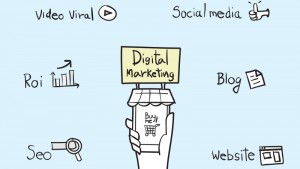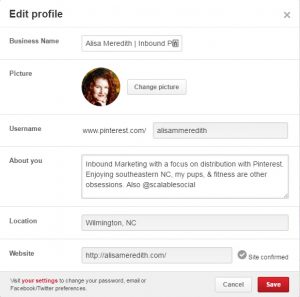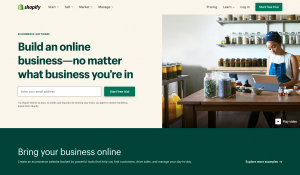E-commerce is recognized as an important driver of innovation and holds huge potential for entrepreneurs worldwide. It was the focus of the recent UN meeting in Geneva where hundreds of leaders in business, civil society, and government met to discuss various aspects regarding the future of e-commerce. Mukhisa Kituyi, Secretary-General of the UNCTAD, highlighted how important it is for emerging nations all around the world to accept and adopt e-commerce on a large scale in order to not be left behind.
“Those countries, populations and small enterprises, which have no presence on the digital platform are not only invisible, but they basically cannot grow, they cannot compete.” — Mukhisa Kituyi, Secretary-General of the UNCTAD
There is no doubt about the tremendous potential that e-commerce holds for the future of business globally. However, even as online businesses continue to experience a boom in many sections of the industry and in most parts of the modern world, it is easy to make mistakes that can hold an online business back. If you have an emerging e-commerce site, or even an established one, keep reading to get a few tips to avoid common pitfalls and to assure there is nothing lurking in your “blind spot”.
9 Mistakes That Can Bust Your Online Business
1. Unsatisfactory Customer Service
Even though customers will be purchasing online and not speaking face-to-face with your salespeople, customer service is still important. Make it easy for customers to get their questions answered, speak to a person (if they want), or file a complaint. You also need to be prepared to take returns and process a variety of payments, including refunds if necessary.
2. Lackluster Product Images and Descriptions
The only way for customers to truly understand what they’re buying online is through product images. They cannot pick up the object or test it out but must infer from the images you choose that it is what they’re looking for. Make sure to offer more than one product shot, preferably from multiple angles. If the product comes in many different colors, make sure to include pictures of those options as well, or at least switch the color of your existing images. You also want your product description to cover all the points of difference, but also answer questions about how the product is made, what it does or how it works. Whenever possible, include a listing of the materials used to make the product, any manufacturing processes or techniques, and if it comes with an automatic warranty.
3. Complicated Buying Process
Once a purchasing decision has been made, the customer should be able to make their purchase quickly and with as few clicks as possible. Make sure to offer a “check-out as a guest” option so that people who don’t wish to create an account don’t have to. If possible, keep your check-out process to one screen.
4. Substandard Search Capability
If you have a multitude of products, it’s important that customers can search using a few keywords and find the information they need. According to Andy Eades of Elevate Web, customers who use on-site search to find a product are three times more likely to purchase. With this type of conversion rate, you don’t want to miss out on these customers because of a faulty search engine. Most website platforms offer a search engine plug-in, but make sure you’ve optimized your product descriptions with keywords and tags as well.
5. Poor Social Media Presence
It’s just about impossible to conduct business online and not use social media. This is especially true for e-commerce. Sites like Pinterest and Instagram can act as veritable catalogs of products, giving people the chance to share their favorite products with their followers. Also, Twitter and Facebook are valuable promotion channels that allow people to spread the word about you and your site. Make sure that you have social sharing buttons available on all your product pages.
6. Unreliable and Unscalable Platform
Apart from the services or the products that you are selling, certain core services on which your very site is built upon always plays a crucial role in building a reputation. Your hosting service partner helps to assure that your website never goes down even when it’s experiencing a particularly huge traffic surge. Imagine a situation where you are experiencing appreciable traffic on your site during the holiday season and you have the resources to handle large orders. Suddenly, your web hosting service provider fails you and your site goes down. All those potential customers will now be taking their business to your competitors, while you wait helplessly for your website to get up and running again.
“In fact, 57 percent of consumers will not recommend a business with a poorly designed mobile site.” — Chris Belew, CEO of Apptive
7. Unresponsive Web Site Design
We no longer live in a world of desktop computer users. Today, transactions are taking place on smartphones and tablets at an alarming rate making it imperative that you have a mobile-optimized or device-agnostic website. For most website platforms, this feature is automatically included. If your e-commerce site is older, however, then you might want to consider having it designed in HTML5 so that people can view your products seamlessly on whatever device they choose.
8. Nonexistent Search Engine Optimization Strategy
How are people going to find you? There’s a good chance they’ll search for your company or product using one of the major search engines like Google. In order for you to be listed in the first few pages of the search results, you must have a solid SEO plan for your site. Search engine optimization is about more than keywords; it also focuses on how your site is built, how images are tagged and what data is parsed by search bots that conduct those ridiculously quick searches.
9. Confusing Site Navigation
There aren’t too many things that can discourage a customer quicker than poor navigation. Hard-to-find information, a lack of buttons and too many font types and colors all lead to customer frustration and often no sale. Your e-commerce site should be easy to navigate. People should be able to click through images to the product page, see more information about a product, and click on the header at the top to take them back to the homepage. Don’t reinvent the wheel when it comes to your site’s navigation; use navigation best practices to get the most out of your site.

Whether you’re just starting your e-commerce business or you’re looking to upgrade your current one, avoiding these 9 mistakes should put you on your way to e-commerce success.
Once you’ve mastered the basics, it’s important to focus on nurturing current customers and driving new leads. We’ve developed several guides to help you properly plan and execute your email and marketing automation project. Be sure to download our Marketing Automation Conditions for Success Diagnostic to help you facilitate the transformational changes you need for a successful Marketing Automation journey.
Photo credit: Flickr
Business & Finance Articles on Business 2 Community(48)







